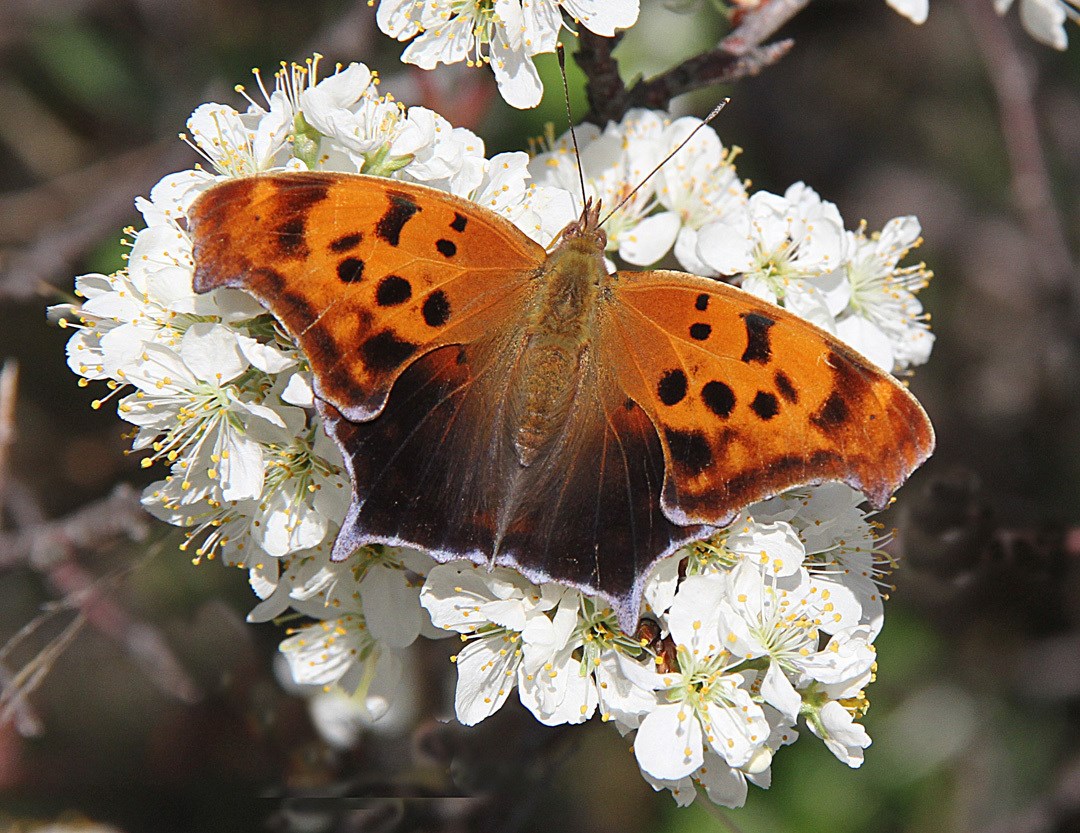A National Mall & Memorial Parks Cherry Blossom Education Program

Library of Congress, Carol Highsmith
A Visit to Washington DC
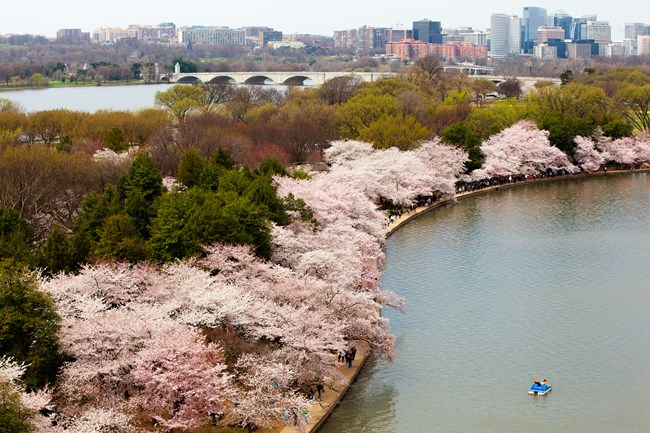
NPS Photo, Rachel Hendrix
Good afternoon!
Today, we are going to take a trip to Washington D.C.
It's spring and the cherry trees are in bloom! This is a view of the Tidal Basin in Washington, D.C.
Today we’ll learn about cherry trees, wildlife, and humans.
Cherry Trees
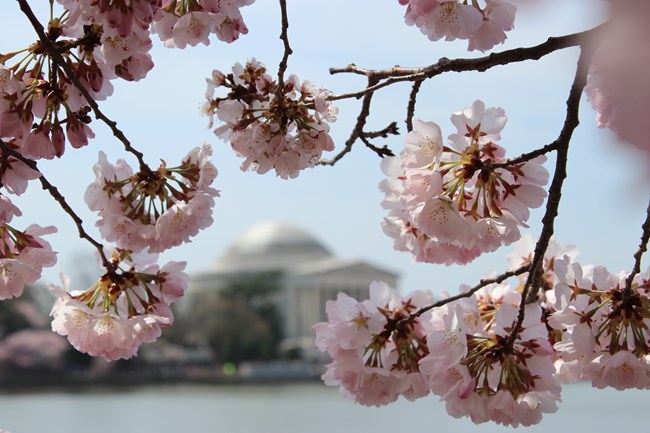
NPS Photo Rosie Mendoza
Today we'll answer some exciting questions!
How do cherry trees work?
How do wildlife interact with the cherry trees?
How do humans impact cherry trees in National Parks in the Washington D.C.?
How can we help conserve and protect these trees?
First, let's begin with some basic about plants!
Many Species of Life!
All organisms have in common beginning their life cycle, growth, reproduction, and death. These changes happen in a pattern specific to each species. These patterns can look very different in different kinds of plants! Let's look at a flowering plant: cherry trees!
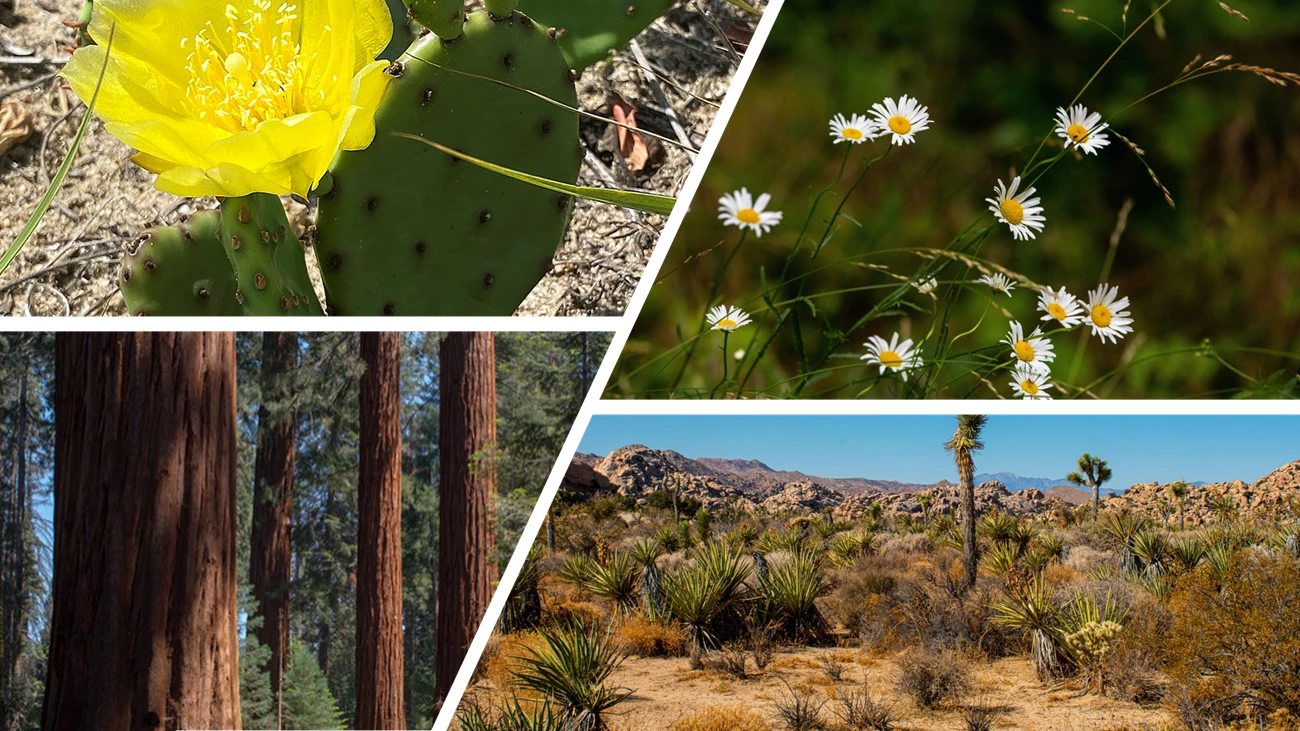
NPS Photos
What Do Plants Need?
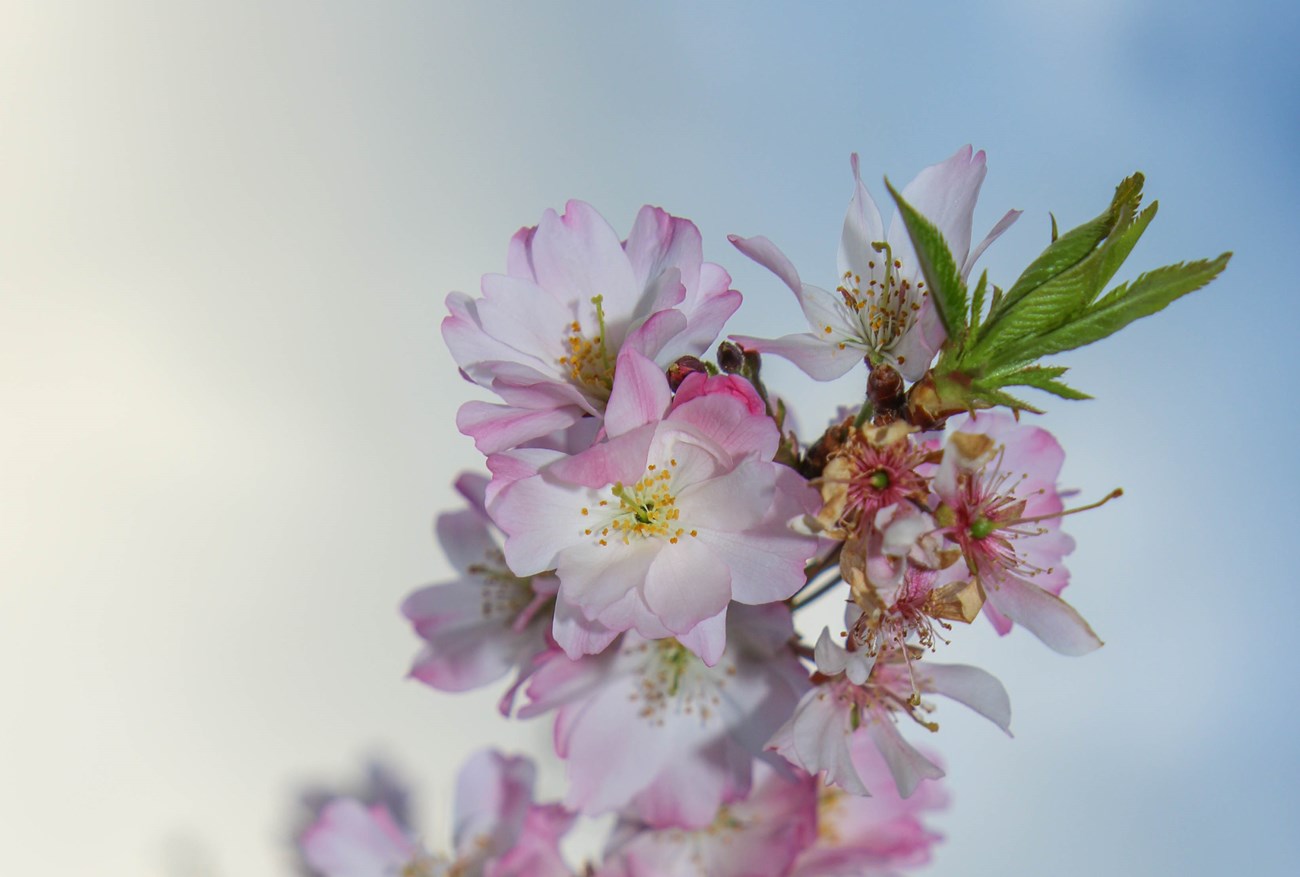
NPS Photo
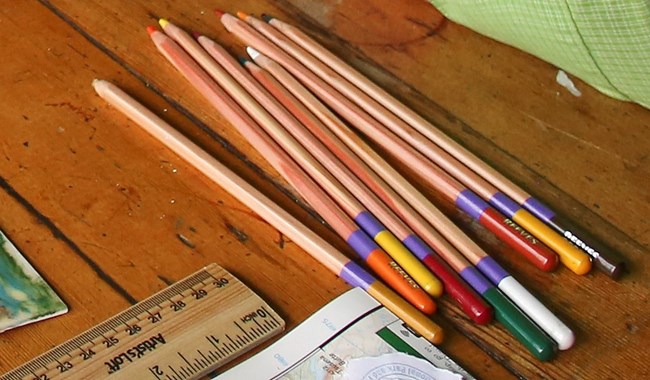
Image Detail - NPS Photo, Emily Mesner
Drawing Activity: Plants!
Draw your own healthy plant environment!
It can be any plant – and as fantastical as you like!
Just be sure to include everything the plant needs to grow and be healthy.
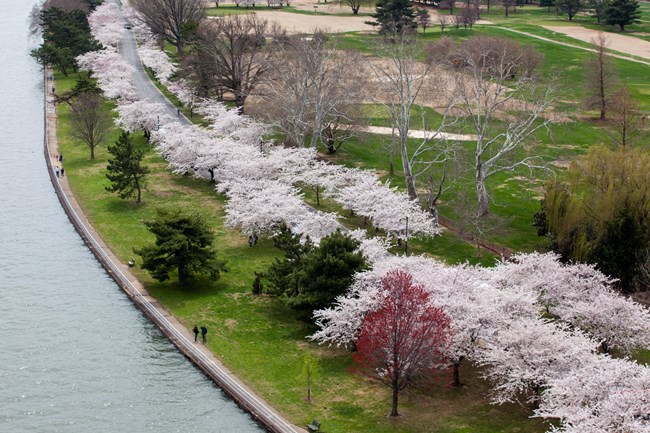
NPS Photo
Growing Zones
All organisms need the right conditions to live. You wouldn't be very comfortable standing outside without a coat all winter! Trees live their whole life cycle where their seeds take root. That spot has to have the amount of water, sunlight, nutrients, and the right temperature.
This map shows growing zones, places where certain plants will thrive. These are shown in colors on the map and in the legend. Cherry trees do well in zones 5 - 8. Let's see if we can find those!
Which zone do you live in? In which zone is Washington DC?
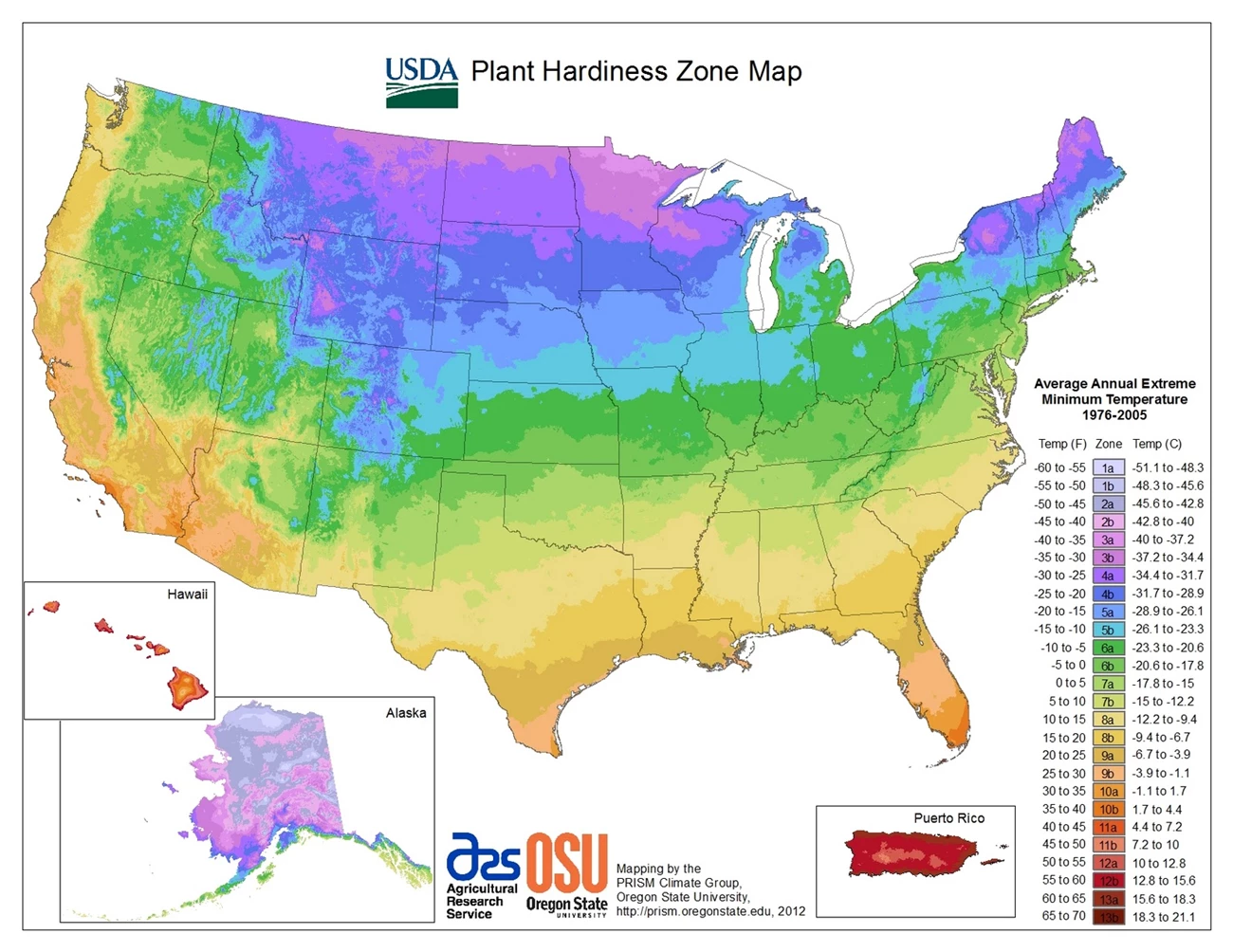
United States Department of Agriculture (USDA)
Parts of a Plant

NPS Photo, Victoria Stauffenberg
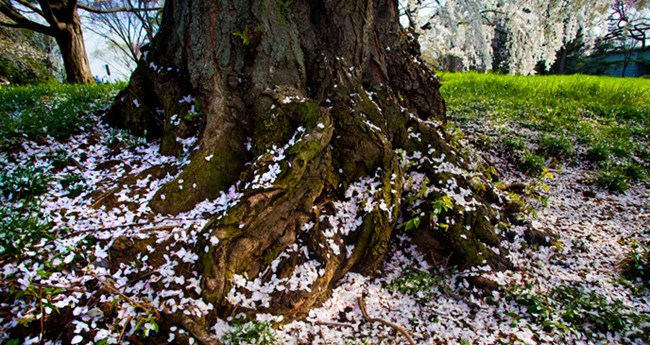
NPS Photo
Roots
Roots anchor the plant in place. They absorb water and nutrients (food) from the soil. (We'll talk more about roots soon!)
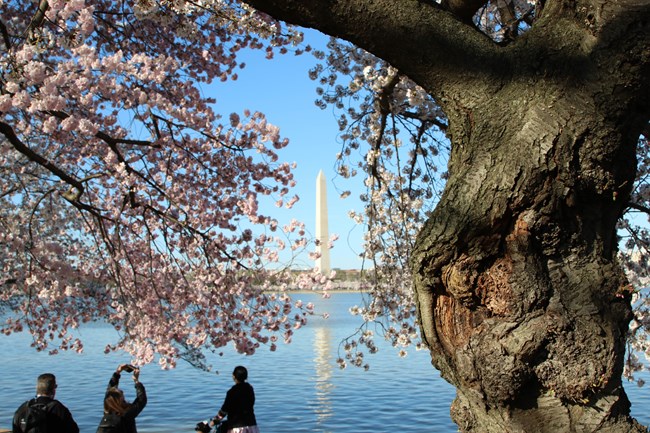
NPS Photo Victoria Stauffenberg
Trunk
The trunk carries water and nutrients up from the roots to the rest of the plant. It also lifts the leaves up to the sunlight.
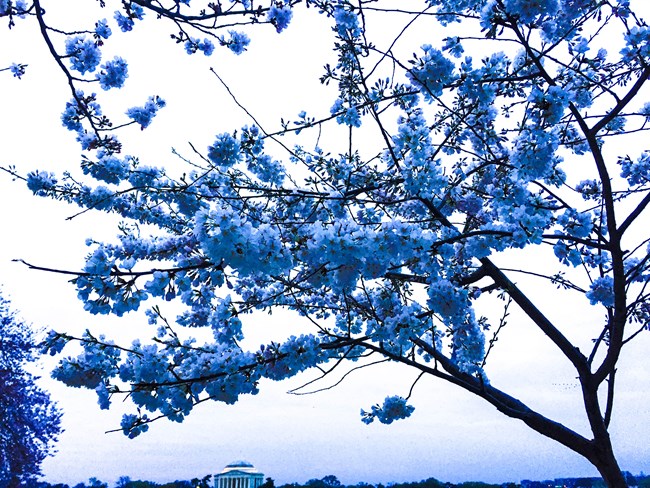
NPS Photo, Victoria Stauffenberg
The branches lift the leaves even higher to the sun. Most flowers and leaves grow from the branches.
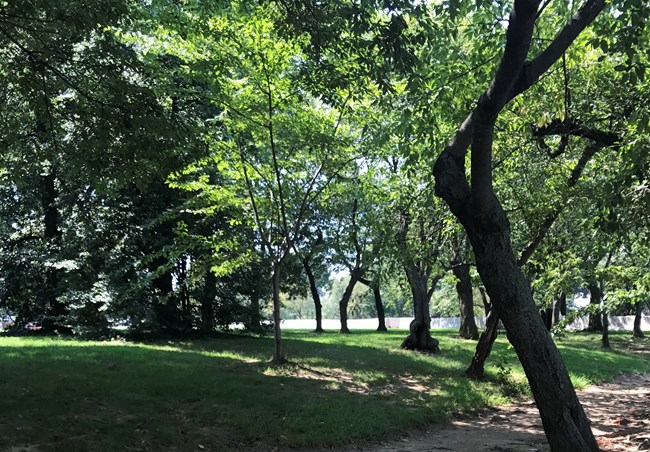
NPS Photo
Leaves
Leaves grow from the branches and make food for the plant. They do this by absorbing sunlight and performing photosynthesis. Photosynthesis is the word for a special process that plants use to make food from the sun's energy!
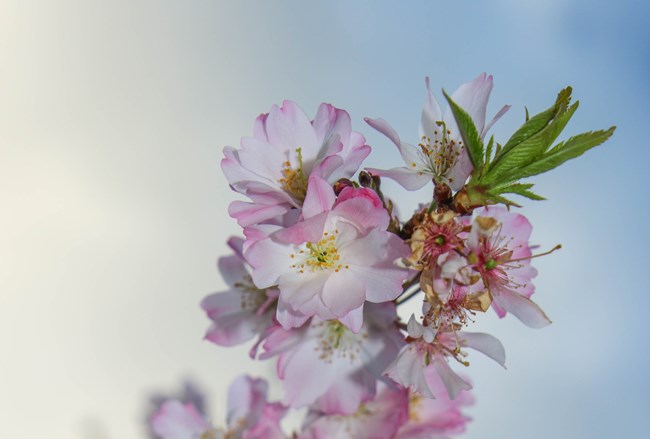
NPS Photo
Flowers
Flowers bloom in bright colors and with scents to attract wildlife. The flowers make seeds and fruits!
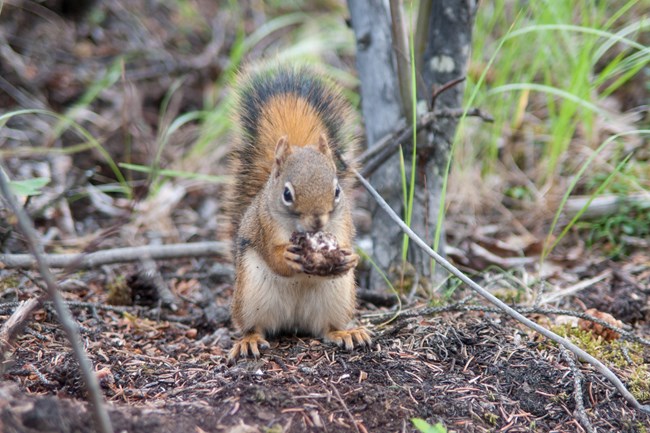
NPS Photo Kera Heeschen
Seeds
Seeds are how new plants grow! Packed into each seed is all the nutrients a new plant needs to sprout from the soil and begin growing. Seeds can be all sorts of shapes.
Where have you seen seeds recently? (Hint: think about lunch!)
Parts of a Flower

NPS Photo
Let’s take a closer look at flowers. What are the parts of a flower?
Flowers have several parts, each with an important job.
You can see the petals! What are the other parts?
Move the slider in the images below to reveal labels for the parts of a flower.

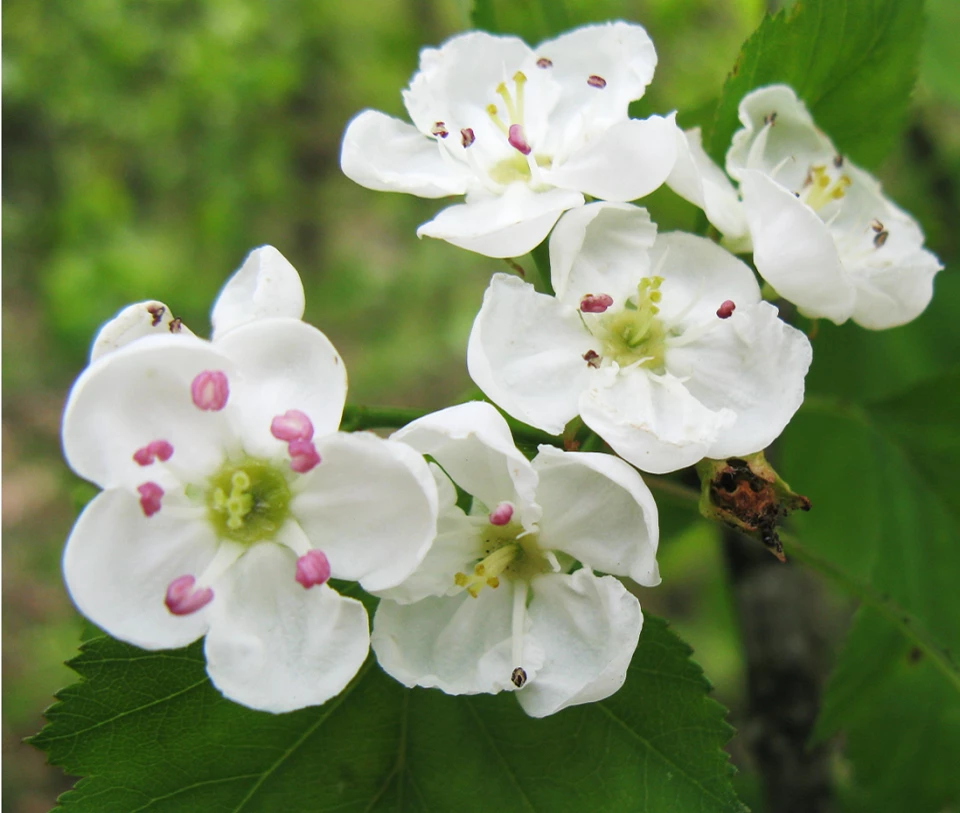
Left image
Credit: NPS Photo
Right image
Credit: NPS Photo
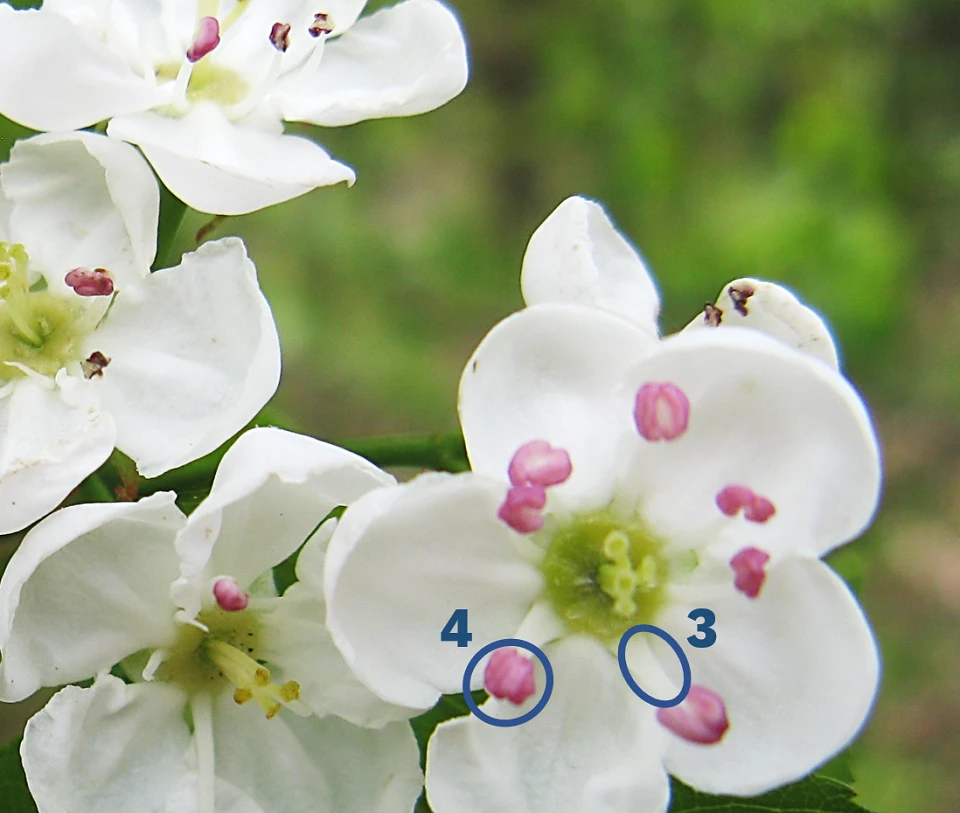
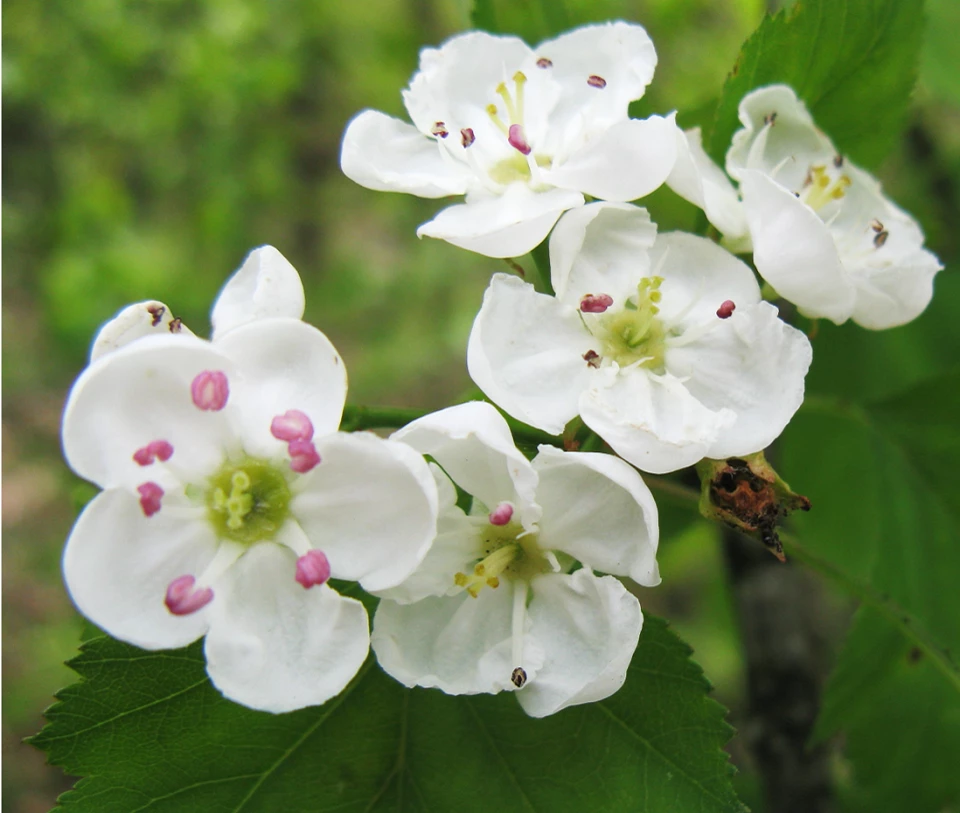
Left image
Credit: NPS Photo
Right image
Credit: NPS Photo

Image Detail - NPS Photo, Emily Mesner
Drawing Activity: Flowers!
Your turn!
Can you draw the parts of a flowering cherry blossom?
When pollen from the stamen reaches the pistil of another flower, new seeds can grow! But how does the pollen get from flower to flower?
Wildlife and Cherry Trees

NPS Photo, Rachel Hendrix
Wildlife interact with plants.
Plants are also found everywhere, from towering trees to sidewalk weeds.
In Washington DC, these plants include flowering cherry trees!
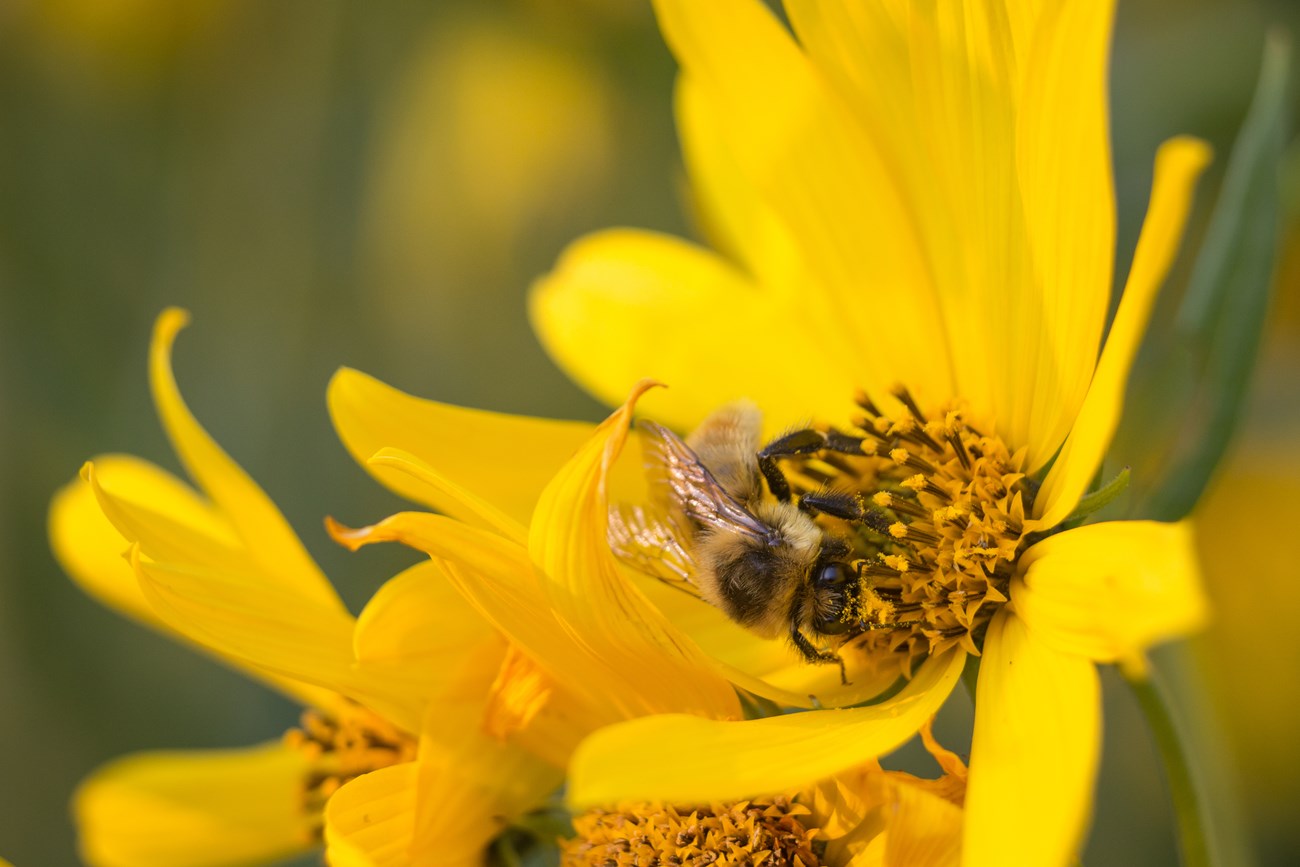
NPS Photo, Neal Herbert
Pollination
Who guessed spreading pollen?! Good work!
Pollination is how plants reproduce. Pollen needs to make its way from the stamen of a flower to the pistil of another flower for seeds to grow.
But plants need help to move their pollen! Pollinators are animals who move pollen from flower to flower.
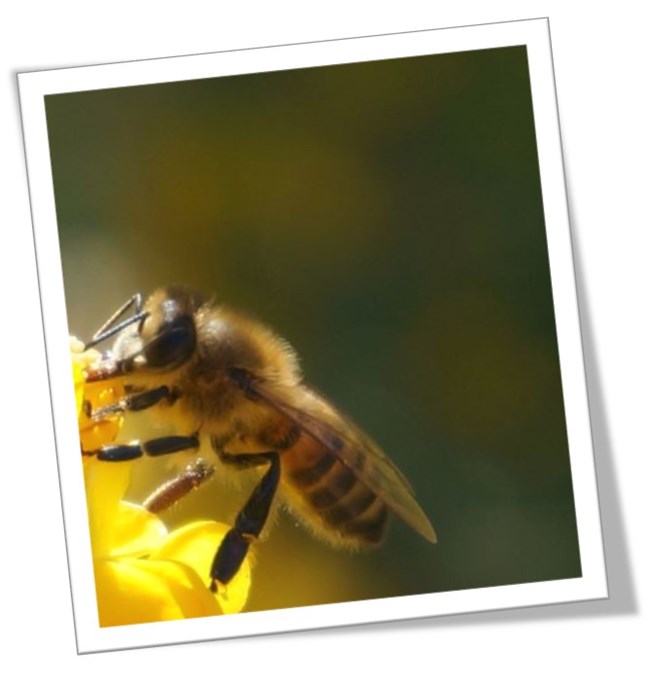
NPS Photo
How does it work?
Insects (and some animals) are important pollinators. Bees, butterflies, and others - including the robber fly in the large photo above, who looks like a bee - play an important role in the lives of plants.
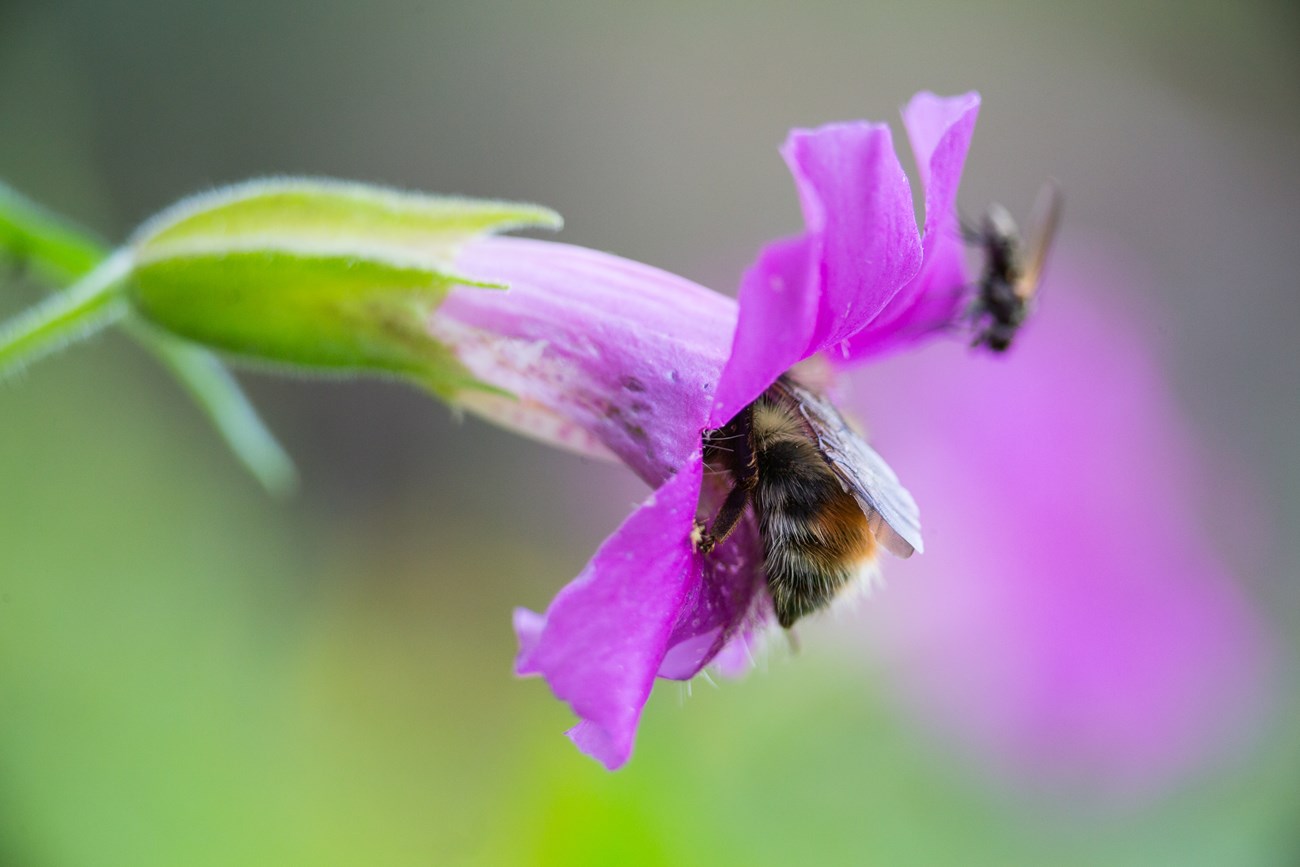
NPS Photo, Neal Herbert
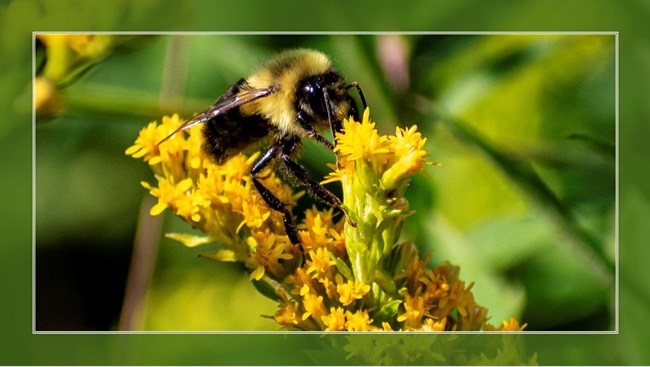
NPS Photo Detail, Jane Gamble
Pollen rubs off from their legs and shakes off from their wings! Some of this pollen will fall on the pistil of the new flower and reach the ovary.
Bees do something special called buzz pollination - what do you think that might be?
Some flowers need bees to pollinate them by buzzing and shaking pollen loose. These including the flowers of many of the foods that we like to eat!
Once pollen has been carried from the stamen of one flower to the pistil of another flower, pollination has occurred! New seeds can begin to form. Those seeds will grow into new plants!
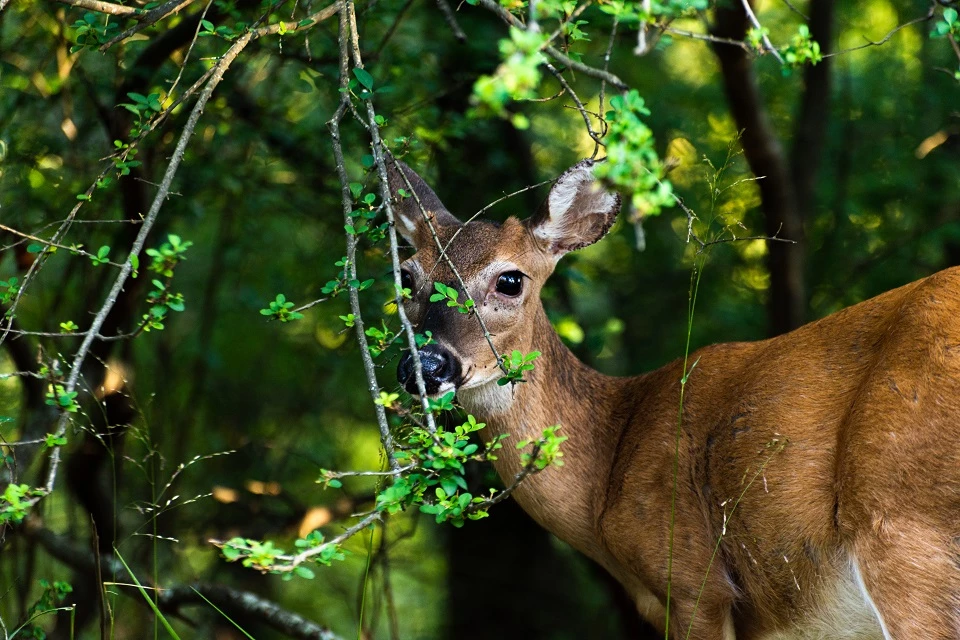

Left image
Credit: NPS Photo, Mitch Smith
Right image
Credit: NPS Photo, Fred MacVaugh
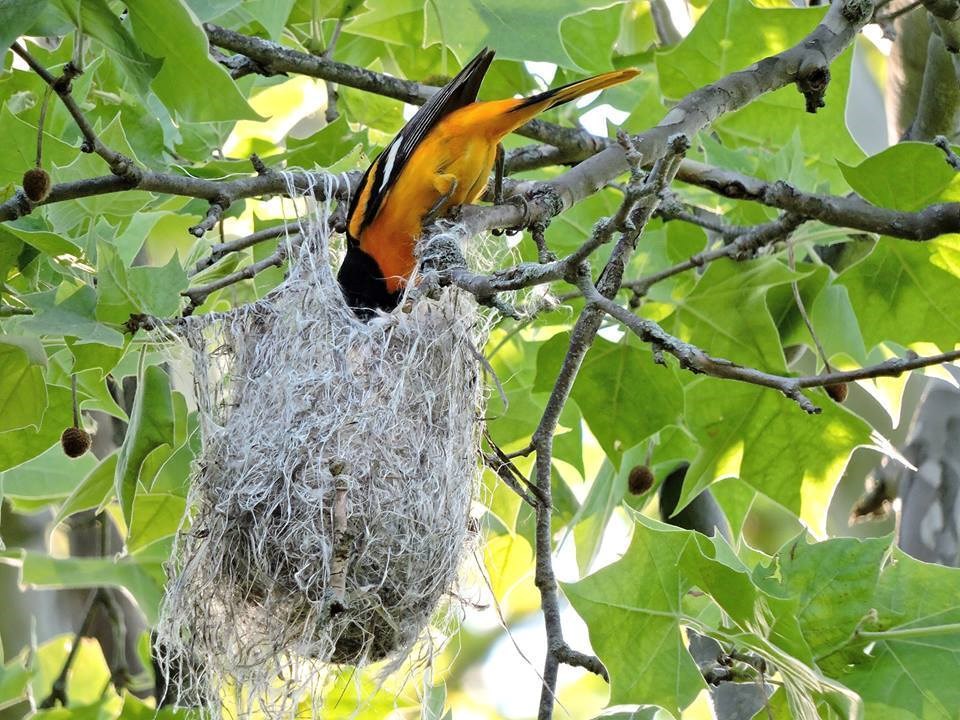
NPS Photo
Flyways
Who guessed birds?! Good work!
The cherry trees in the Tidal Basin are a habitat for birds.
Birds who live in Washington D.C. year-round nest and forage in and around cherry trees.
The parks around the Tidal Basin where the cherry trees grow is a stop-over on the Atlantic Flyway.
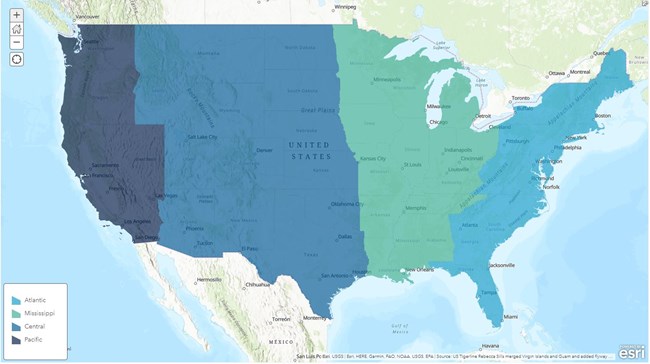
NPS Map
These are the flyways of the United States. A flyway is a place where lots of birds migrate with the seasons.
From east to west...
The Atlantic Flyway is in blue.
The Central Flyway is in yellow.
The Mississippi Flyway is in purple.
The Pacific Flyway is in green.
Which flyway do you live in?
Birds rely on green spaces along their journey. The cherry trees give them a place to stop and rest and feed in Washington, D.C., even around all those city buildings.
Urban Wildlife
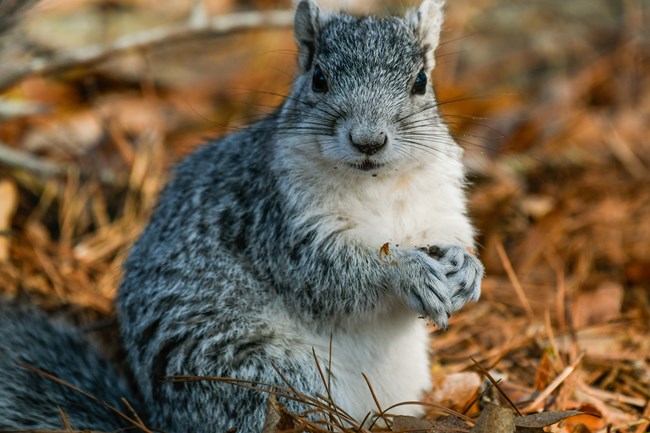
NPS Photo Jane Gamble
Who guessed... you name it! There are many animals that need green spaces to survive and thrive in Washington D.C. and other cities. These include squirrels, foxes, even the occasional coyote, and many more! Birds of prey hunt squirrels and need places to rest. The squirrels need places to hide from the birds of prey! This is just one of the many interactions you might witness while watching city trees. Wildlife are all around us - and they need wild spaces too!

NPS Photo Detail, Emily Mesner
Drawing Activity: Cherry Tree
Draw your own cherry tree!
Include a few animals who are important to the cherry trees or who need the cherry trees!
Humans and Cherry Trees
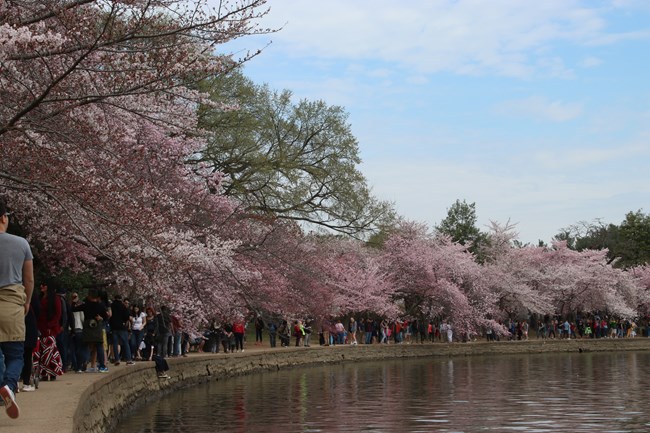
NPS Photo, Rosie Mendoza
Humans enjoy cherry trees too!
The cherry trees that grow in Washington D.C. are beautiful parts of the city ecosystem.
They are fragile and need protecting!
Thousands of people come every year to see the cherry trees. It's important that we are gentle with the trees. How can we do that?

NPS Photo
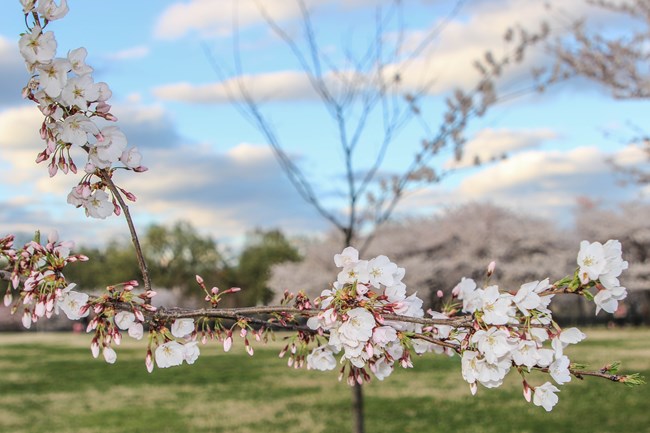
NPS Photo, Victoria Stauffenberg
Climbing trees is fun! But lots of people trying to climb the same fragile trees can break their branches.
Let's try an activity with this! If you bend a twig or a small stick, what will happen? It can probably bend the first time, right? Bend it again. How many times do you think you can bend the twig before it snaps?
The same stress can build for tree branches. Climbing cherry trees is best left to the squirrels!
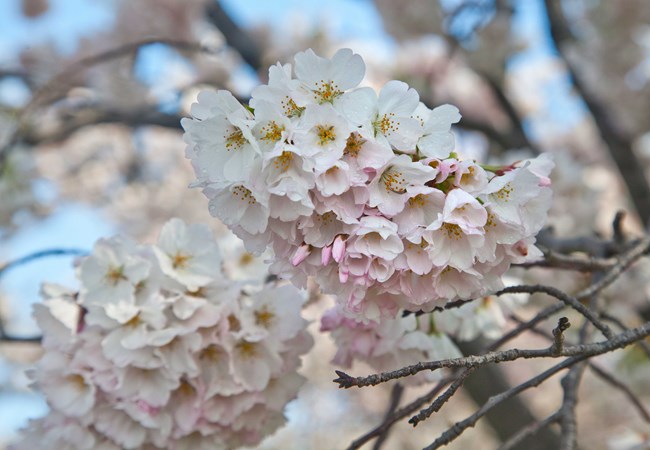
NPS Photo
Blossoms
We learned how important pollination is.
Blossoms are for the bees (and other pollinators)!
Leaving flowers for pollinators gives them the food that they need, and lets them help new plants grow.
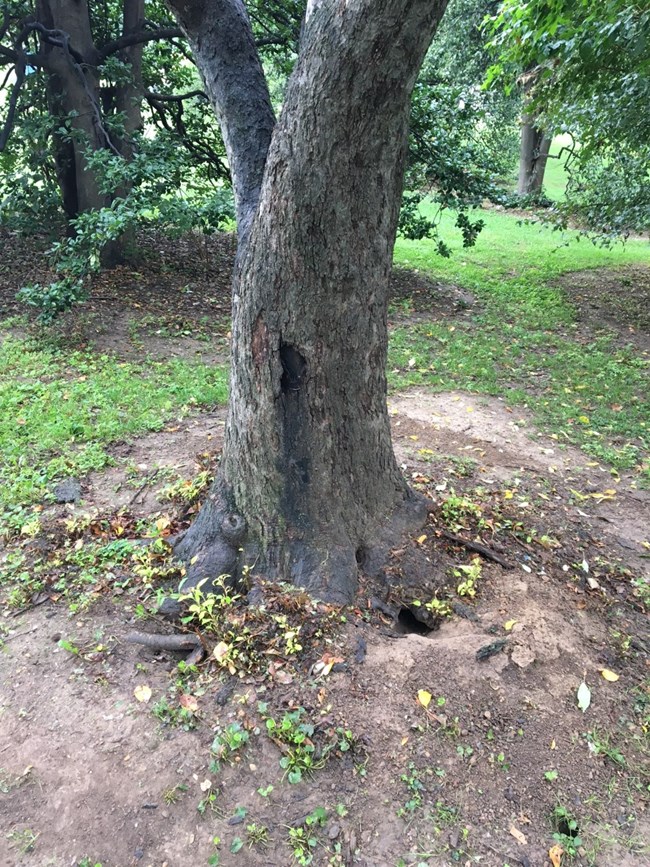
NPS Photo
Burrows
Tossing trash and leaving it on the ground attracts rats.
These small mammals like to dig their burrows into the soil near their food. If they find food near the cherry trees, they'll burrow right into the roots!
This digging harms the tree roots. Properly disposing of trash protects trees. It also protects other wildlife, including the fish and birds in the Tidal Basin!
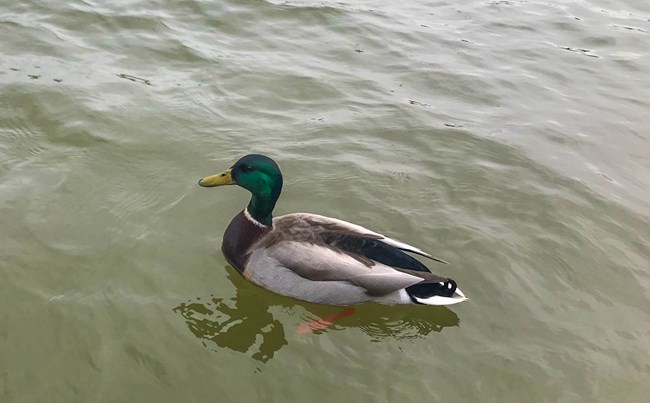
NPS Photo, Victoria Stauffenberg
Wildlife
Properly disposing of trash also protects other wildlife.
Trash that is left on the ground is picked up by wind or rain and washes into nearby water. Lots of animals live here in the Tidal Basin, including fish and birds, like these ducks!
Animals can have a hard time telling trash apart from food. Disposing of trash can help all of these animals stay healthy
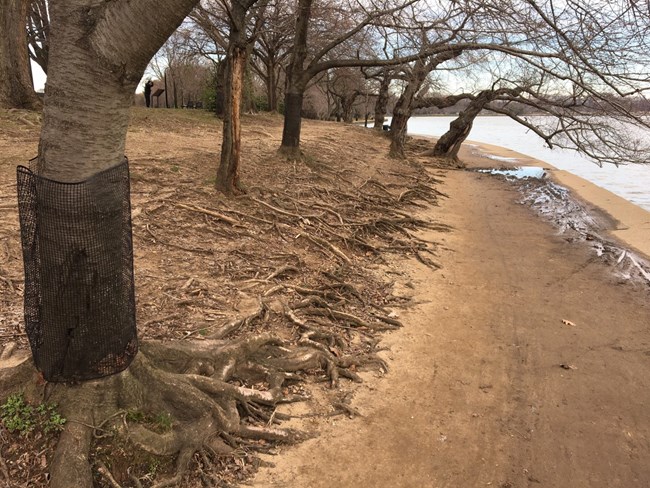
NPS Photo
Roots are Living Too!
Tree roots are how trees get their water and nutrition. They're an important part of how trees live!
Water has to be able to flow through the soil to reach the roots. Some trees have parts of their roots showing above ground. Others are hidden entirely under the soil. But they feel what happens on the surface!
One person walking over or sitting to picnic on top of tree roots doesn’t have much impact. But what about hundreds? Thousands? Many thousands?
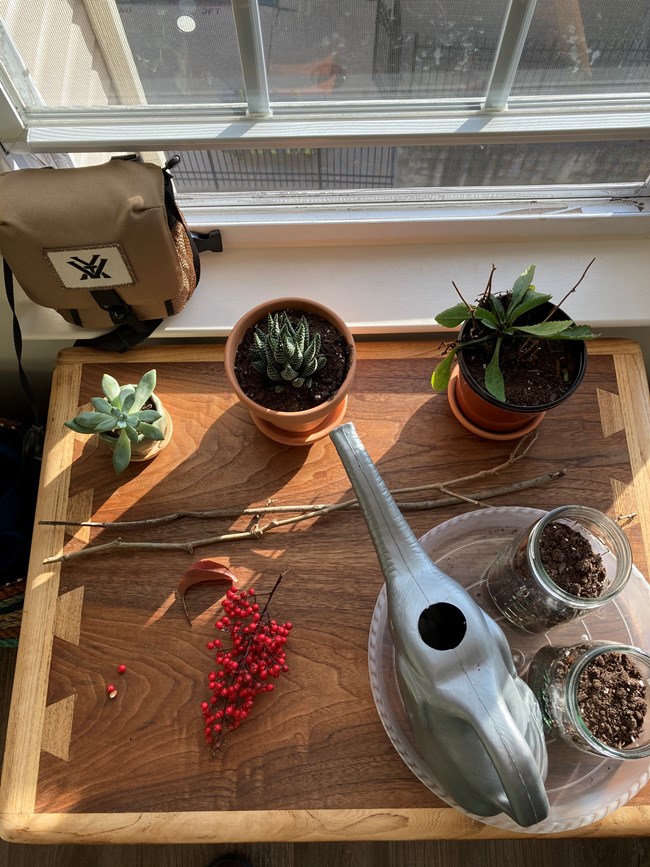
NPS Photo
Activity: Soil Experiment
Imagine a rain storm. Imagine the water absorbing into the ground and reaching the tree roots. Now imagine pressing your hands down around this sprout, so all the dirt was packed hard? What would happen to the roots? Could the rain water absorb and reach the roots?
Experiment Time! Take two clear buckets of soil. Pack one tight as you can! Pour water into both buckets of soil: the loose-packed and hard-packed dirt. Could a plant’s roots drink from either bucket?
Water has a hard time absorbing into the hard-packed earth. The same is true for the ground around trees! This is a much larger area than a small bucket, so one or two people walking across the roots doesn't harm anything at all. But how about many thousands of people walking in the same space day after day, year after year? That can pack the soil too tight for the trees.
Staying on the hard path is a good way to be gentle with the roots and protect our cherry trees!
Be a Ranger!

Imagination Activity!
Imagine you are a national park ranger protecting cherry trees in Washington, DC, helping people be safe and enjoy their visit.
What would you want people to know? What would you tell people who were going to visit the cherry trees?
Let's imagine!
You can share your thoughts in words or draw a poster of what you want people to know!
Cherry Trees and Climate Change
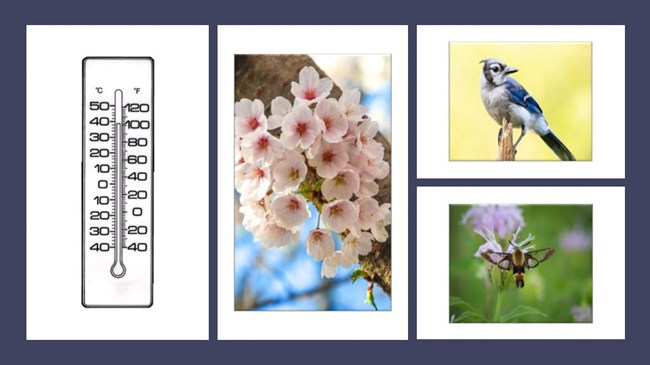
NPS Images
Let's think about how three pieces of the ecological puzzle fit together:
Cherry trees, like all plants, need certain conditions to grow.
Flowering plants rely on insects spread pollen from flower to flower.
Birds rely on cherry trees to recover during their migrations. This recovery requires enough food; many birds eat insects!
The bloom, insect activity, and bird migrations: all of these pieces must come together at the same time.
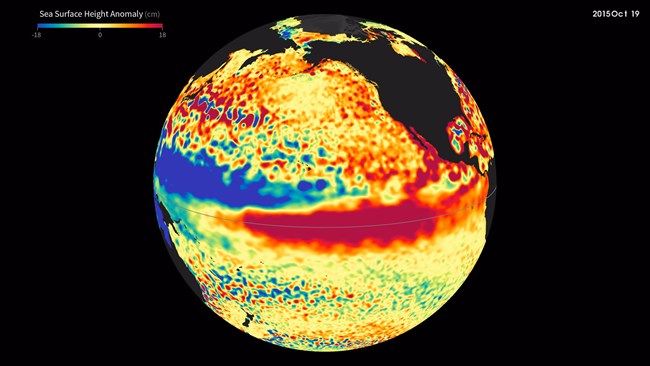
NASA
Cherry trees bloom when there have been enough warm days in a row. Rapid exposure to high temperatures can make cherry trees bloom and drop their blossoms within days.
Insects become active with temperature too... but many species require higher temperatures than plants.
Bird migrations begin due to a variety of causes, including changes of day length.
Birds, insects, and cherry trees rely on bloom activity, insect activity, and migration patterns to overlap.
Our Planet is Changing
Climate change continues to warm the earth and change large-scale weather patterns.
These changes impact every living thing.
- Duration:
- 4 minutes, 10 seconds
What can cherry trees tell us about climate change?
Conservation at Home
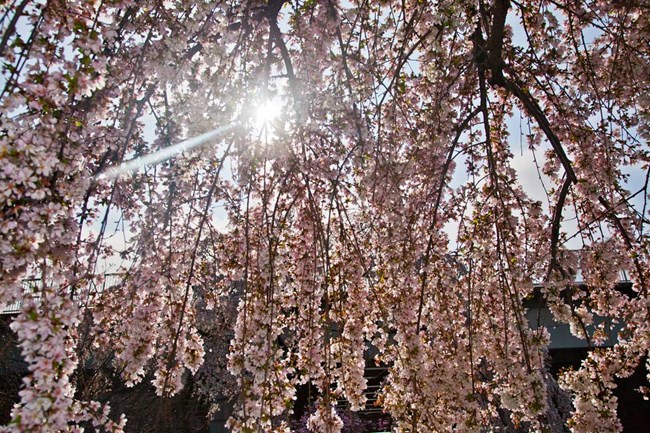
NPS Photo
Plants & wildlife are everywhere!
Wherever you live, you can observe nature and help the natural world thrive.
There are lots of ways to do this!
You can teach people about all the things you've learned about protecting nature.
Cleaning up trash is an important way to protect animals and plants.
Being mindful of how much energy we use, and doing things like turning off the lights, helps to protect the atmosphere.
Conserving water, like not leaving the tap running, helps too!
Everyone can be a part of community science and help scientists observe and understand nature.
- Duration:
- 2 minutes, 4 seconds
Watch this short video highlighting what citizen science looks like and why it is important.
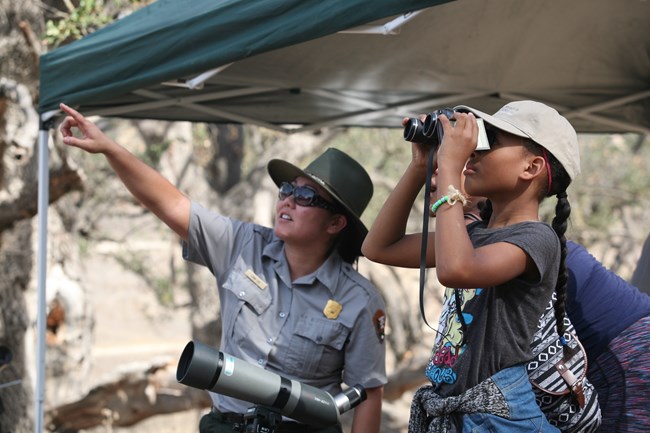
NPS Photo
You can volunteer to observe nature and help scientists understand our world.
There are all sorts of activities you can do with your family! Some of them you can even do online as a game. There are projects with the National Park Service, posted on the National Park Service Citizen Science webpage. You can also visit CitizenScience.gov, or other citizen science organizations!
Citizen science projects happen all around the world, all the time. They happen in person and online! And they're fun to do with friends and family.
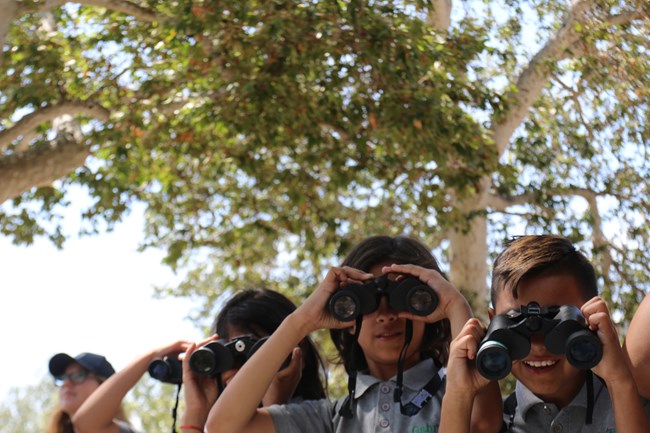
NPS Photo
Let's practice observation
Do you have a window near you? Go ahead and look outside! Some of the things you might be asked to observe in a citizen science project are:
How many plants or animals did you see?
What kind where they?
How old were they?
What were they doing?
Let's take a few minutes and make some observations - then share what you saw!
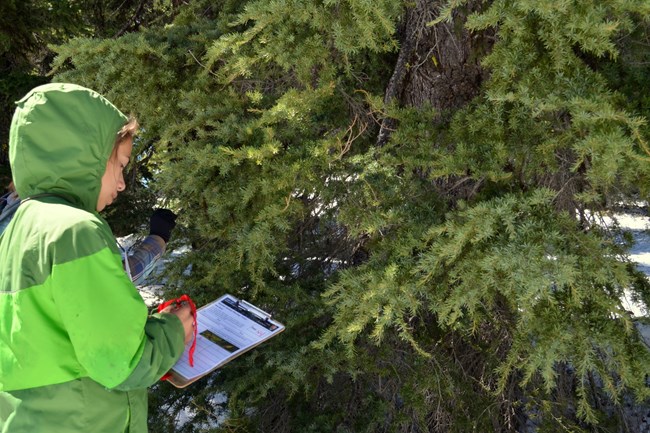
NPS Photo, Stephanie Duwe
What did you see? (Plants, birds, mammals, insects...)
How many of each kind did you see? (It's okay to approximate!)
What was happening? (Did the plants have leaves? Were the animals eating, resting, playing, or hunting? Were the insects or birds flying or sitting on a plant? Describe what you saw!)

NPS Photo
What do you think?
What's the most interesting thing you've learned today?
What do you want to learn next?
What questions do you have?
If you think of questions later, you, your family, or your class can email us!
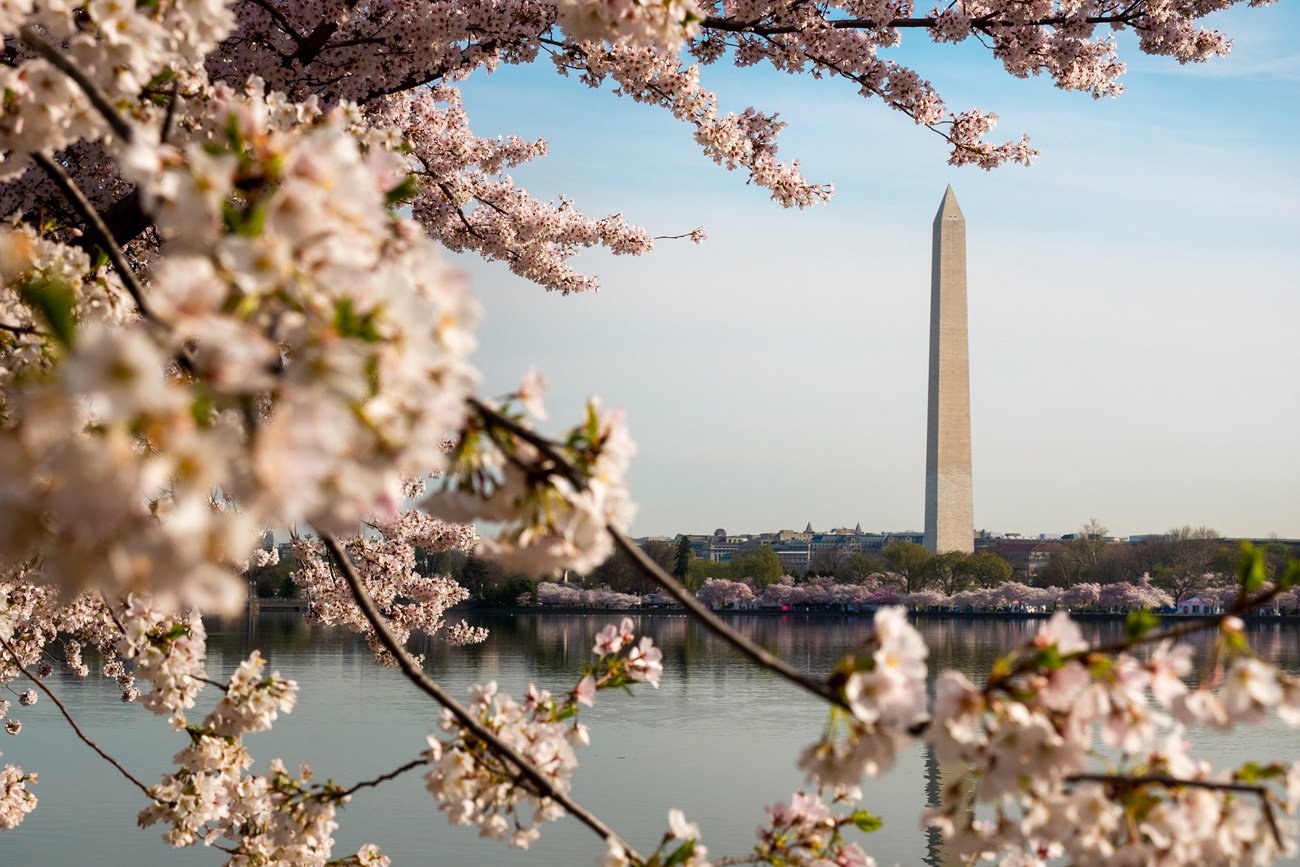
NPS Photo, Rachel Hendrix
Thank you!
Thank you for joining and learning with us today!
We hope you had fun and learned a lot.
We hope to see you - in person or online - at one of your National Parks again soon!
Last updated: March 9, 2021

